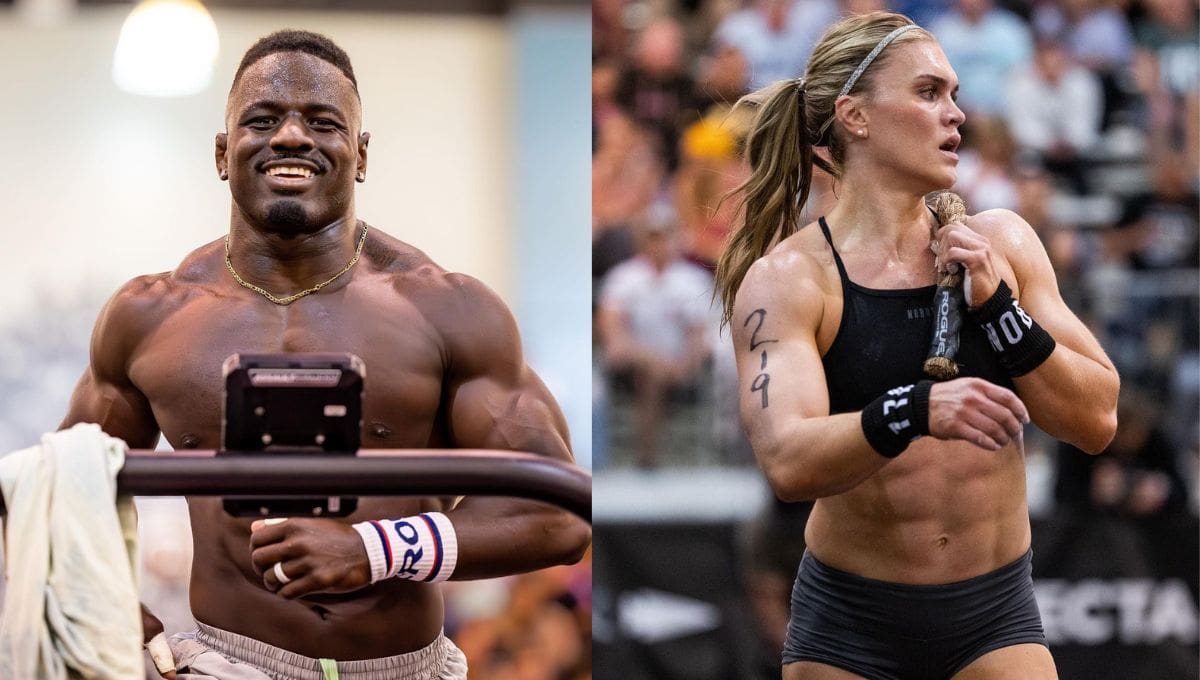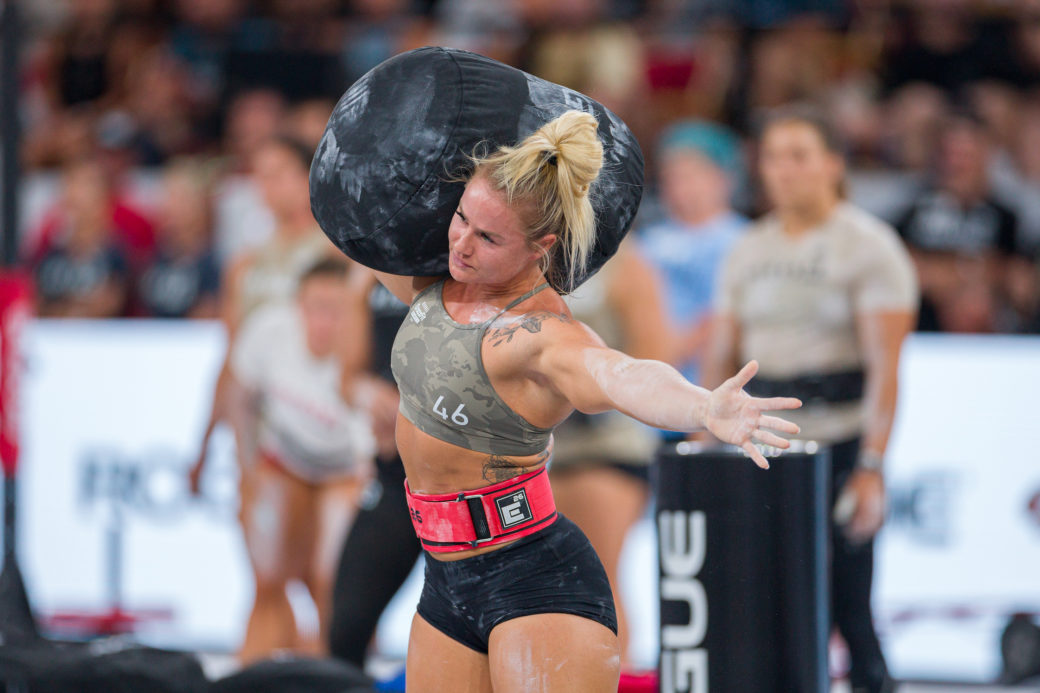The CrossFit Games Death

The CrossFit Games Death, also known as a “death workout,” is a staple in the CrossFit Games, a global fitness competition that tests athletes’ strength, endurance, and mental toughness. The CrossFit Games have evolved significantly since their inception in 2007, and the “death” element has become an integral part of the competition, pushing athletes to their absolute limits.
The Evolution of “Death” Workouts in CrossFit Games History, Crossfit games death
“Death” workouts have become a defining feature of the CrossFit Games, pushing athletes to their limits and testing their mental fortitude. The evolution of these workouts reflects the evolving nature of the competition itself, with increased complexity and intensity over the years.
- Early Years: In the early years of the CrossFit Games, “death” workouts were often simple, focusing on high-volume repetitions of basic movements. One example is the “Fran” workout from the 2007 CrossFit Games, which consisted of 21-15-9 repetitions of thrusters and pull-ups.
- Mid-2010s: The mid-2010s saw the introduction of more complex “death” workouts, incorporating a wider range of movements and incorporating time constraints. The “Murph” workout, introduced in 2011, is a prime example. It involves a 1-mile run, 100 pull-ups, 200 push-ups, 300 squats, and another 1-mile run, all while wearing a weighted vest.
- Recent Years: In recent years, “death” workouts have become increasingly challenging, often featuring multiple rounds of grueling movements and requiring athletes to adapt to changing conditions. The “Fight Gone Bad” workout, introduced in 2009, is a classic example. It involves completing as many rounds as possible in 17 minutes of five different exercises: squats, push-ups, rowing, deadlifts, and box jumps.
Notable “Death” Workouts
Here are some notable “death” workouts from different years, along with their descriptions and notable athletes:
| Year | Workout Name | Description | Notable Athletes |
|---|---|---|---|
| 2007 | Fran | 21-15-9 repetitions of thrusters and pull-ups. | Annie Thorisdottir, Rich Froning |
| 2011 | Murph | 1-mile run, 100 pull-ups, 200 push-ups, 300 squats, and another 1-mile run, all while wearing a weighted vest. | Mat Fraser, Tia-Clair Toomey |
| 2013 | The Open 13.5 | 10 rounds for time of: 30 double-unders, 15 deadlifts, 9 burpees. | Josh Bridges, Camille Leblanc-Bazinet |
| 2015 | The Open 15.5 | 21-15-9 repetitions of deadlifts, box jumps, and rowing. | Ben Smith, Katrin Davidsdottir |
Understanding “Death” Workouts: Crossfit Games Death

The CrossFit Games “death” workouts are infamous for their grueling nature, pushing athletes to their absolute limits. These workouts are designed to test not only physical strength and endurance but also mental fortitude and resilience. Understanding the characteristics of these workouts, the physiological challenges they present, and the psychological factors that enable athletes to overcome them is crucial for appreciating the extraordinary feats of these elite competitors.
Characteristics of “Death” Workouts
These workouts are characterized by their high intensity, long duration, and combination of different modalities.
- Intensity: “Death” workouts typically involve high-intensity movements like heavy lifting, explosive gymnastics, and metabolic conditioning, pushing athletes to their maximum capacity.
- Duration: These workouts can last anywhere from 10 to 30 minutes, sometimes even longer, demanding sustained effort and a high level of fitness.
- Modality Combinations: “Death” workouts often combine different modalities, such as weightlifting, gymnastics, and metabolic conditioning, requiring athletes to adapt and perform efficiently across multiple disciplines.
Physiological Challenges
The intense nature of “Death” workouts poses significant physiological challenges for athletes, pushing their bodies to their limits.
- Muscle Fatigue: The high volume of work and repetition in these workouts leads to severe muscle fatigue, impacting both strength and endurance.
- Cardiovascular Strain: The combination of high intensity and long duration places a significant strain on the cardiovascular system, demanding high levels of oxygen uptake and efficient blood flow.
- Metabolic Stress: The metabolic demands of “Death” workouts are extremely high, leading to significant energy depletion and the accumulation of metabolic byproducts, such as lactic acid, which contribute to muscle fatigue and pain.
Psychological Factors
“Death” workouts require not only physical strength but also immense mental toughness and resilience.
- Mental Toughness: Athletes need to be mentally prepared to face pain, fatigue, and doubt, maintaining focus and determination throughout the workout.
- Resilience: The ability to bounce back from setbacks and maintain a positive attitude in the face of adversity is crucial for success in these challenging workouts.
- Pain Tolerance: Athletes must develop a high pain tolerance to endure the physical discomfort and fatigue that accompany these workouts, pushing through the pain to complete the challenge.
Crossfit games death – It’s heartbreaking to hear about any death at the CrossFit Games, especially when it’s related to the sport itself. While the Games are known for their intense physical demands, there are other dangers that can arise, like the risk of drowning during water events.
This article explains the potential dangers and how organizers are working to prevent such tragedies. It’s a reminder that even the most dedicated athletes need to prioritize safety to ensure their well-being during these events.
The CrossFit Games are intense, pushing athletes to their limits, and sadly, sometimes those limits are fatal. While the focus is usually on grueling workouts, a recent incident highlighted a different kind of danger – crossfit drowning 2024.
This tragic event reminds us that even in controlled environments, unforeseen circumstances can occur, demanding constant vigilance and a focus on safety protocols to protect athletes and ensure the Games remain a celebration of strength and resilience, not a tragedy.